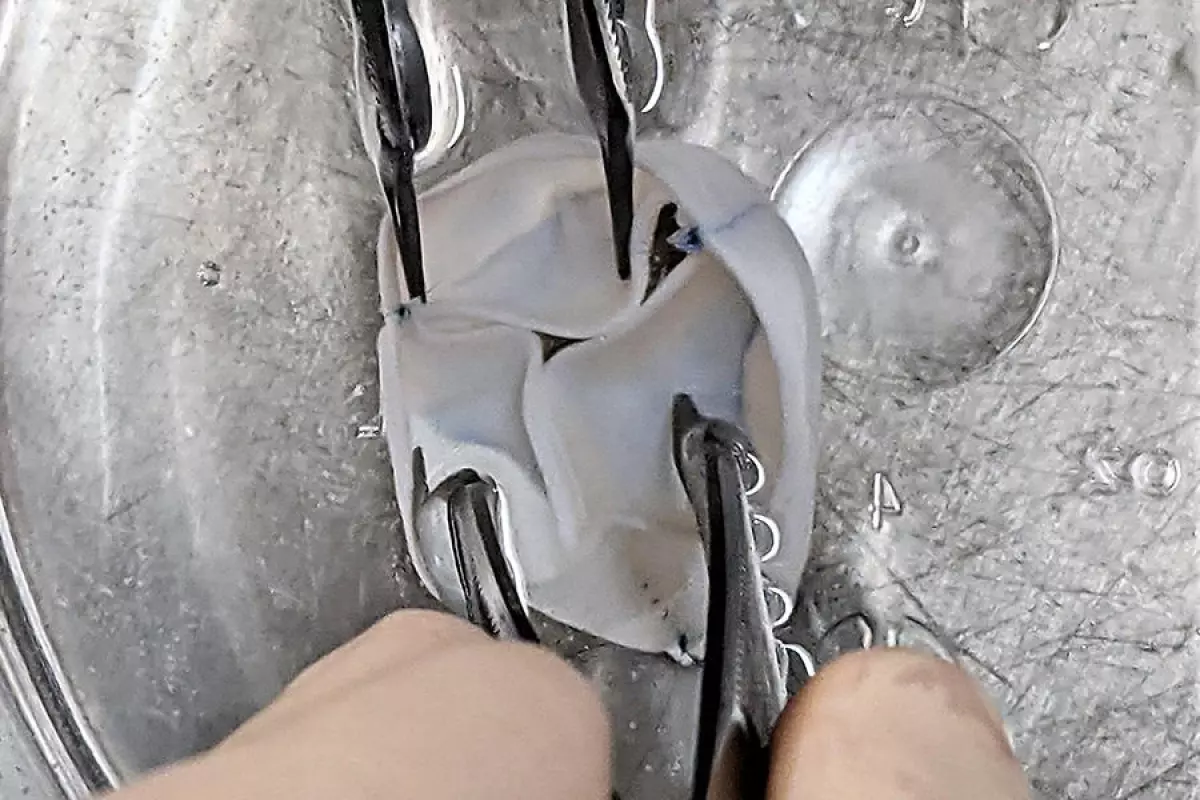When a child receives a replacement heart valve, the device doesn't grow along with them. This means it will have to be surgically replaced, multiple times. Such may not be the case, however, with a new valve that's currently in development.
With some experimental exceptions, most heart valve replacements are made of chemically treated animal-derived materials, which stay the same size while the child's heart grows larger. As a result, they periodically have to be swapped out for larger versions via open-heart surgery – this procedure may have to be performed up to five times before the child reaches adulthood.
Scientists at the University of Minnesota set out to address this problem, by first combining sheep skin cells with a gelatinous protein known as fibrin, within a tube-shaped bioreactor. Cell growth-factor proteins were then added, causing the mixture to grow into a tube of biological material.
Next, a detergent was used to flush the sheep cells out of that material, leaving behind just a tubular structure made up of a collagen matrix. Because that tube no longer contained any cells, it would not be rejected by the host's immune system if it were to be implanted.
Three such tubes (each about 16 mm in diameter) were subsequently joined together along the sides, then sliced width-wise to form a ring. The tissue on the inside of that ring was subsequently trimmed to form flapping leaflets like those of a natural heart valve.

When the resulting implants were grafted onto the pulmonary arteries of three lambs, the animals' cells migrated into the collagen matrix, essentially converting it into each lamb's own biological material. The implants thus grew in size along with the lambs, growing from a ring diameter of 19 to 25 mm over the course of about 52 weeks.
The leaflets also grew in length. Additionally, they showed no signs of the calcification that can adversely affect existing animal-derived replacement heart valves, allowing them to perform better than such implants.
The scientists now plan on implanting the valve directly into a lamb's right ventricle, to emulate one of the most commonly performed heart repairs. Human clinical trials could follow within a few years.
"If we can get these valves approved someday for children, it would have such a big impact on the children who suffer from heart defects and their families who have to deal with the immense stress of multiple surgeries," says the lead scientist, Prof. Robert Tranquillo. "We could potentially reduce the number of surgeries these children would have to endure from five to one. That’s the dream."
The technology is being commercialized by spinoff company Vascudyne, and is described in a paper that was recently published in the journal Science Translational Medicine.
Sources: University of Minnesota, American Association for the Advancement of Science via EurekAlert




